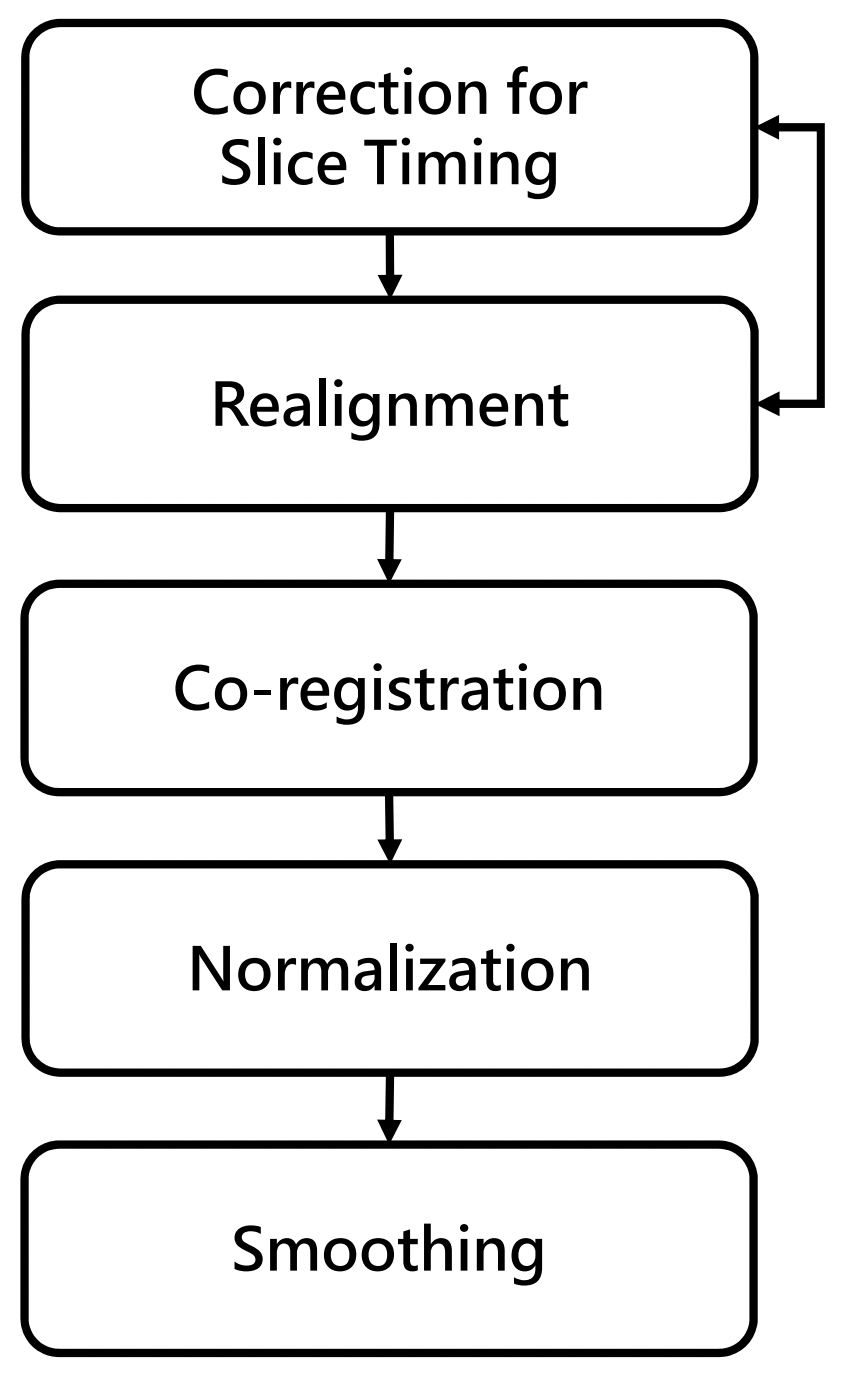Notes of Analysis of Functional MRI
Last updated: 2021-07-27
1 Overview
BOLD signal 能夠回答的三種問題
Brain activation to the corresponding task.
Similarity between local BOLD signal and task design.
“Where is the motion area?”
“Where is the face recognition area?”
分析工具:General Linear Model (GLM)。
Brain encoding to the representation of stimulus classes.
Classification or similarity analysis.
“What are the varying brain states in an area?”
“How do brain cortices encode different types of information?”
分析工具:
Multivariate Pattern Analysis (MVPA).
Classifier‐based MVPA, pattern similarity analysis.
Brain connectivity to the integration of neural networks.
Dependencies of BOLD signals between brain regions.
“How do neurons and neural networks process information?”
分析工具:
Statistical dependency.
Independent Component Analysis (ICA).
Network analysis
BOLD‐fMRI Preprocessing

Figure 1.1: fMRI 資料前處理的步驟。
Slice timing:校正時間的差異。
Realignment:校正腦的位置。
Co‐registration (with anatomical images):fMRI 犧牲掉的空間解析度,在此步驟透過解剖影像可以部分挽回。
Normalization:把頭轉換到統一的座標上。
Smoothing:會降低空間解析度,但可以降低 noise(增進 single noise ratio)。
Segment (tissue classification; optional)
收取資料

Figure 1.2: Block design. 10 tasking blocks (duration = 20s) with resting interval (20s).
SPM T‐test
虛無假設:\(\beta_1 = 0\)。
\(t = \dfrac{c^T\hat{\beta}}{SD(c^T\hat{\beta})}\).